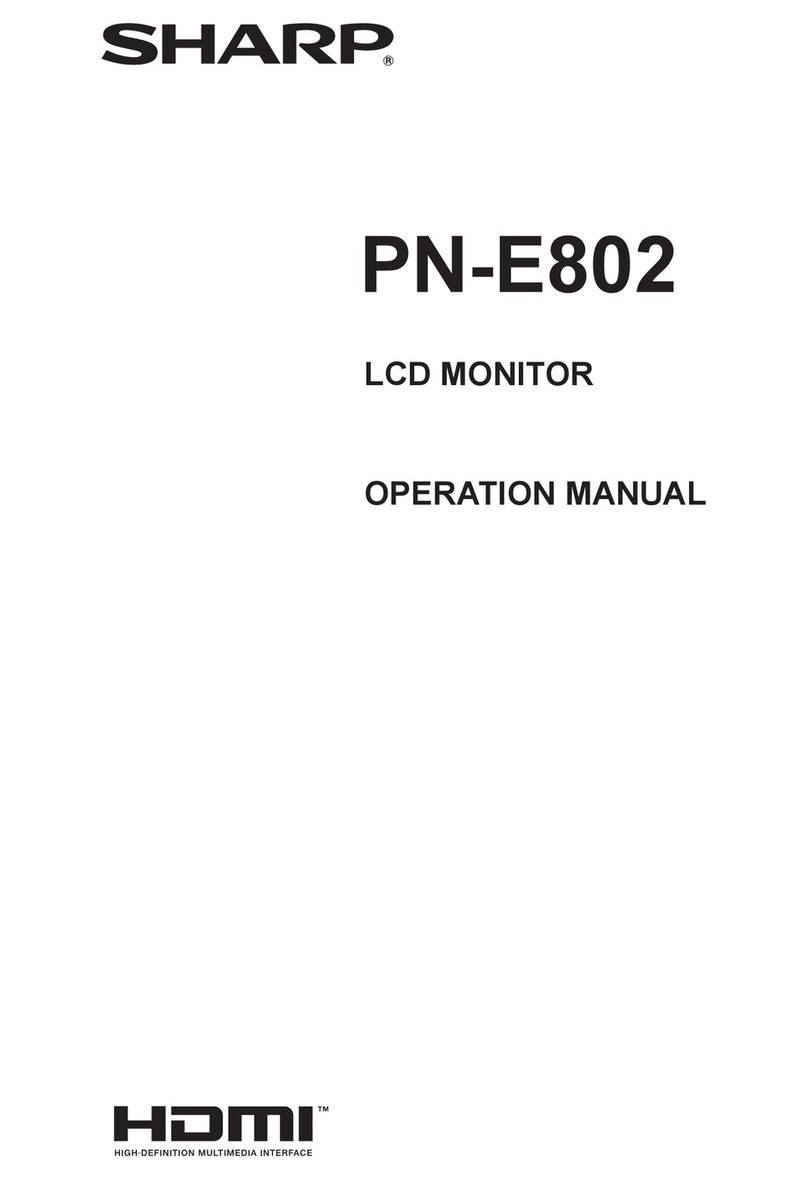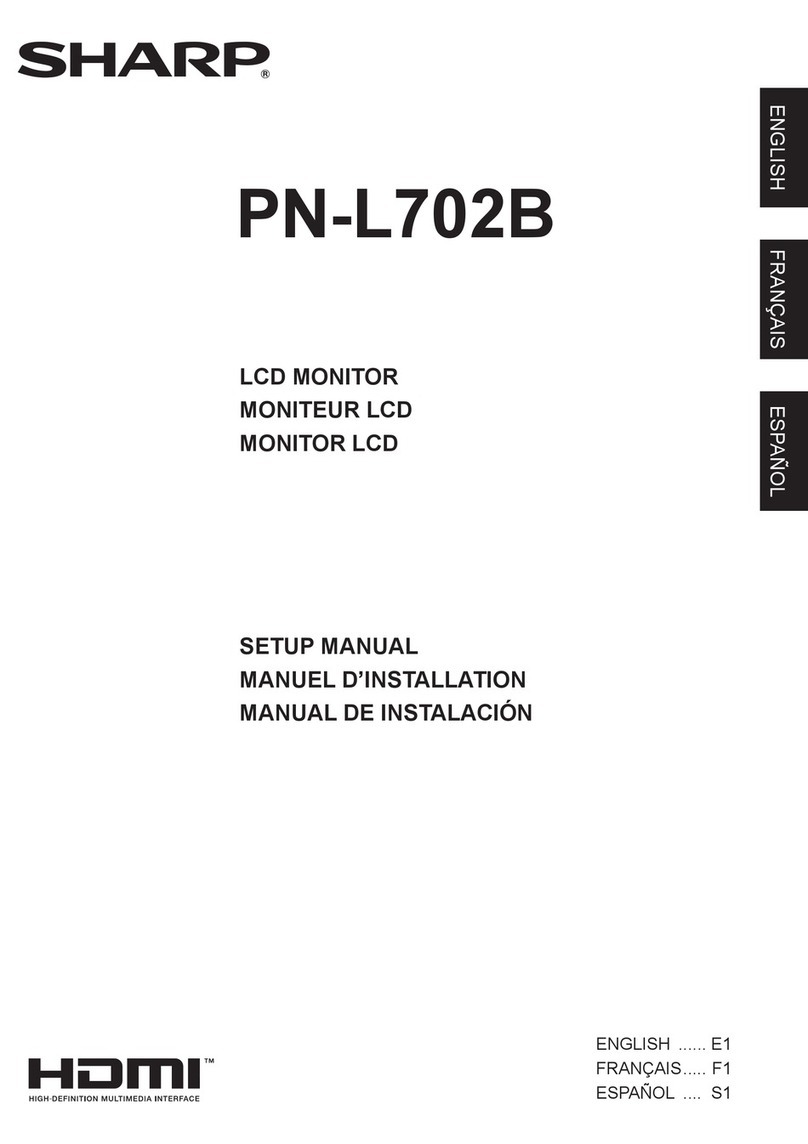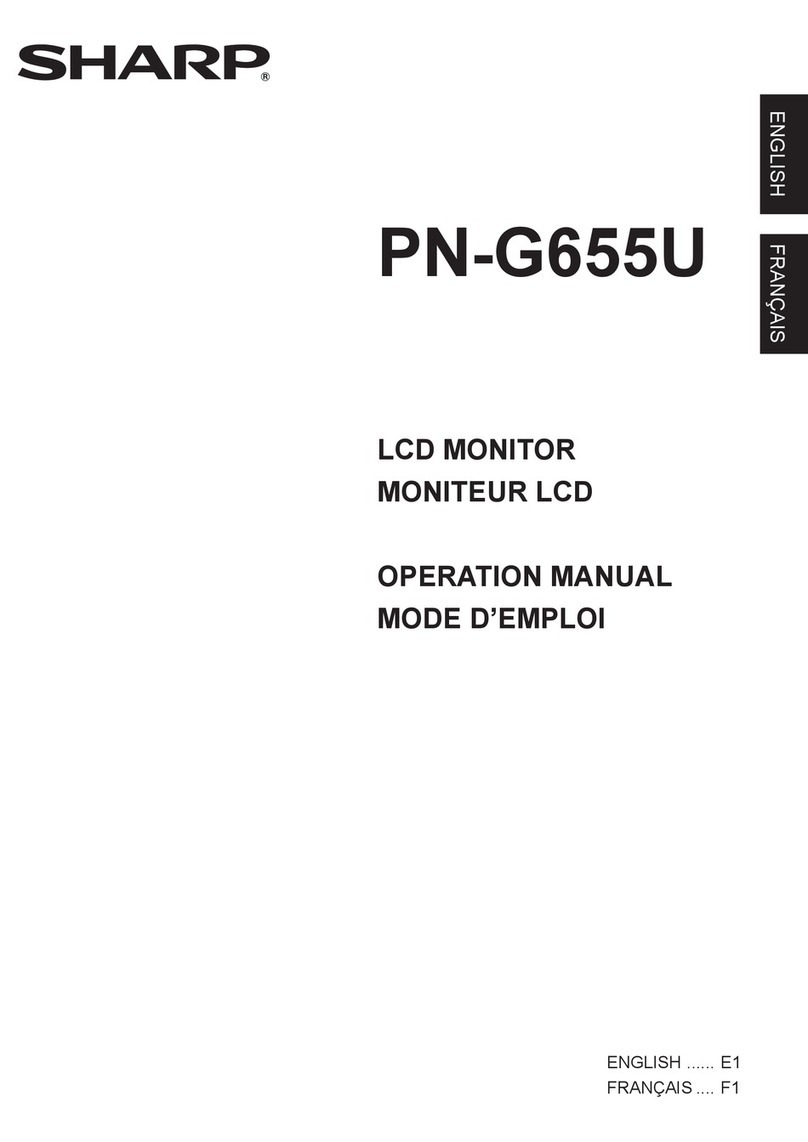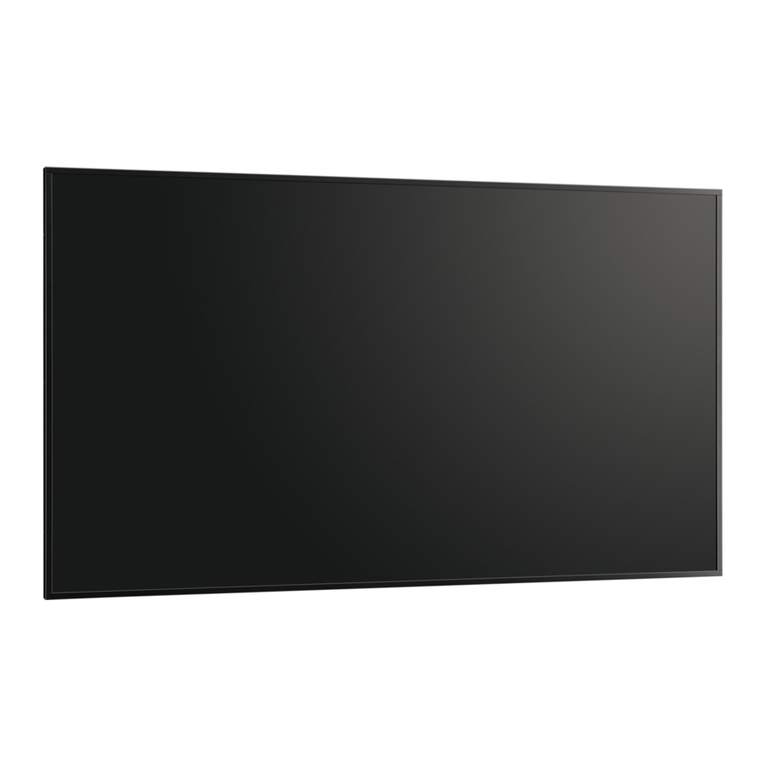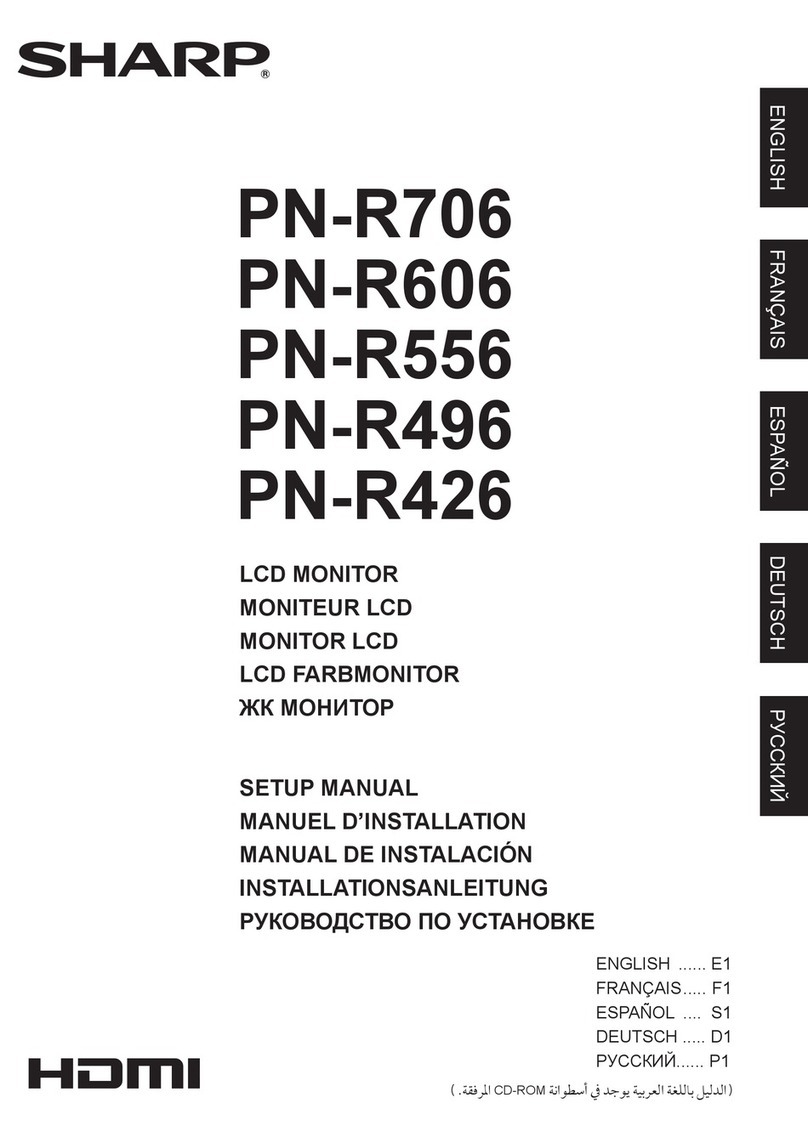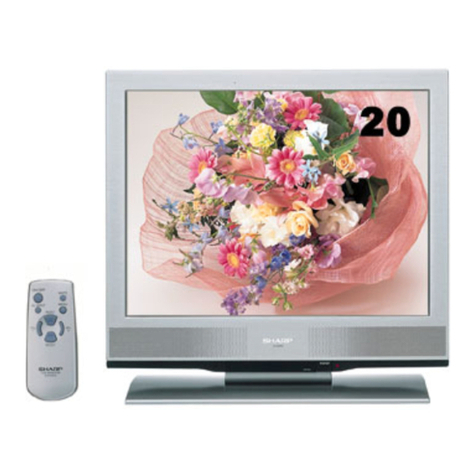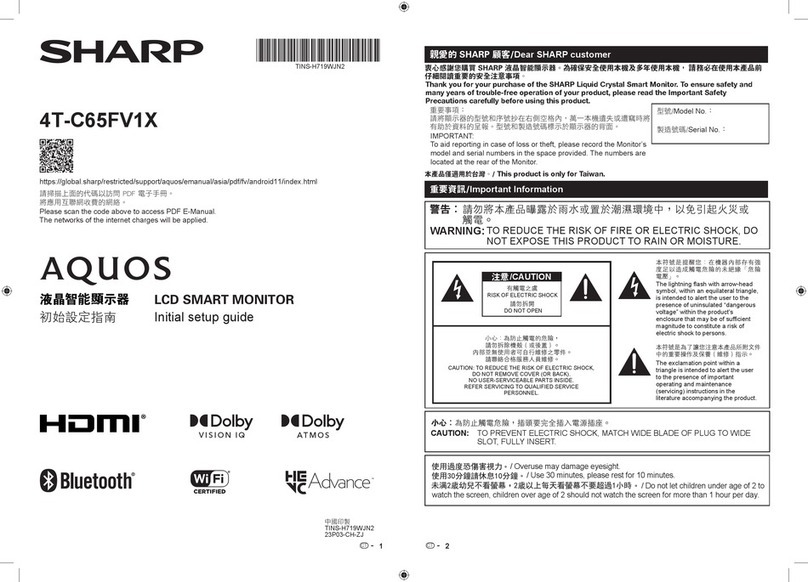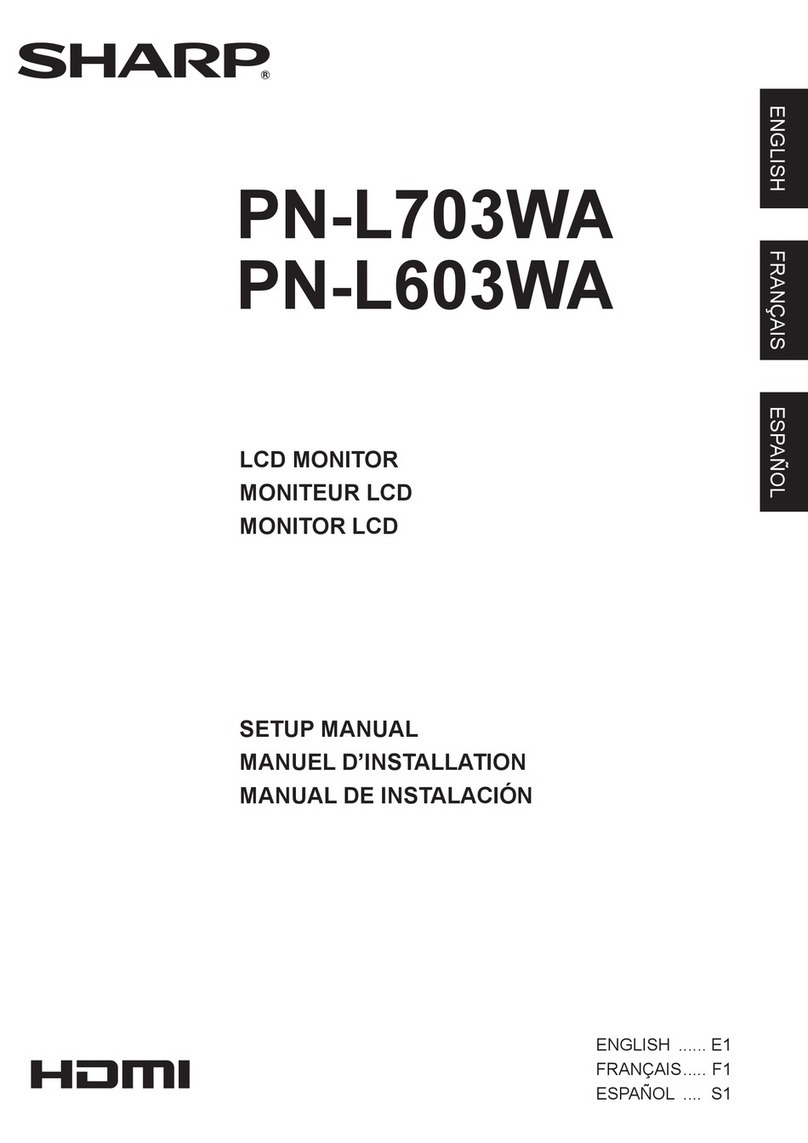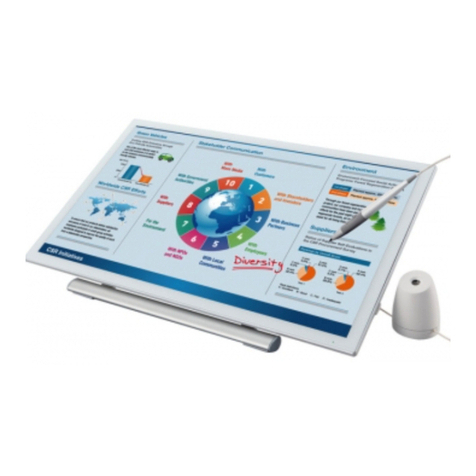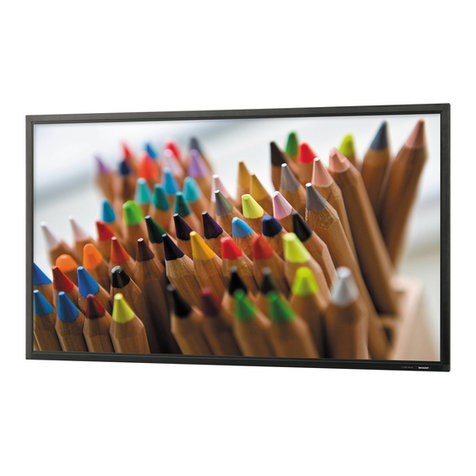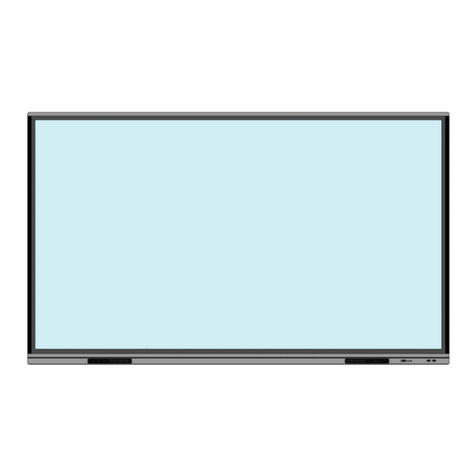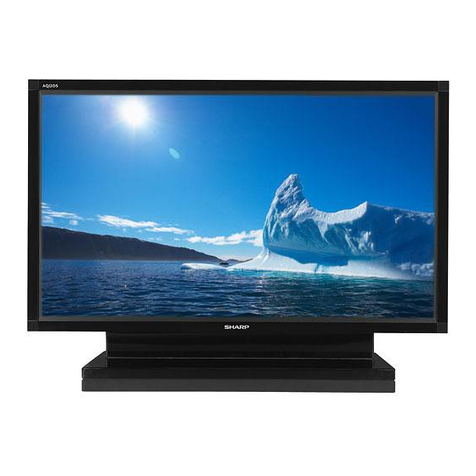
3
LC-20M4U
12345678901234567890123456789012123456789012345678901234567890121234567890123456789012345678901212345
1
234567890123456789012345678901212345678901234567890123456789012123456789012345678901234567890121234
5
12345678901234567890123456789012123456789012345678901234567890121234567890123456789012345678901212345
12345678901234567890123456789012123456789012345678901234567890121234567890123456789012345678901212345
1
234567890123456789012345678901212345678901234567890123456789012123456789012345678901234567890121234
234567890123456789012345678901212345678901234567890123456789012123456789012345678901234567890121234
5
12345678901234567890123456789012123456789012345678901234567890121234567890123456789012345678901212345
AVIS POUR LA SECURITE
De nombreuses pièces, électriques et mécaniques, dans
les téléviseurs présentent des caractéristiques spéciales
relatives à la sécurité, qui ne sont souvent pas évidentes
à vue. Le degré de protection ne peut pas être
nécessairement augmentée en utilisant des pièces de
remplacement étalonnées pour haute tension, puissance,
etc.
Les pièces de remplacement qui présentent ces
caractéristiques sont identifiées dans ce manuel; les
pièces électriques qui présentent ces particularités sont
PRECAUTIONS A PRENDRE LORS DE LA REPARATION
ËNe peut effectuer la réparation qu’un technicien spécialisé qui s’est parfaitement accoutumé
à toute vérification de sécurité et aux conseils suivants.
identifiées par la marque “ å” et hachurées dans
la liste
des pièces de remplacement et les diagrammes
schématiques.
Pour assurer la protection, ces pièces doivent être
identiques à celles utilisées dans le circuit d’origine.
L’utilisation de pièces qui n’ont pas les mêmes
caractéristiquesquelespiècesrecommandéesparl’usine,
indiquées dans ce manuel, peut provoquer des
électrocutions, incendies, radiations X ou autres acci-
dents.
AVERTISSEMENT
1. N’entreprendre aucune modification de tout circuit.
C’est dangereux.
2. Débrancher le récepteur avant toute réparation.
VERIFICATIONS CONTRE L’INCEN-DIE ET
LE CHOC ELECTRIQUE
Avant de rendre le récepteur à l’utilisateur, effectuer
les vérifications suivantes.
1. Inspecter tous les faisceaux de câbles pour s’assurer
que les fils ne soient pas pincés ou qu’un outil ne soit
pas placé entre le châssis et les autres pièces
métalliques du récepteur.
2. Inspecter tous les dispositifs de protection comme les
boutons de commande non-métalliques, les isolants,
le dos du coffret, les couvercles ou blindages de
réglageetdecompartiment,lesréseauxderésistance-
capacité, les isolateurs mécaniques, etc.
3. S’assurer qu’il n’y ait pas de danger d’électrocution en
vérifiant la fuite de courant, de la facon suivante:
• Brancher le cordon d’alimentation dans la prise CA de
110~240V et le câble d’alimentation CC dans le jack
du moniteur. (Ne pas utiliser un transformateur pour
cet essai.)
• A l’aide de deux fils à pinces, brancher une résistance
de 1,5kΩ10 watts en paralléle avec un condensateur
de 0,15µF en série avec toutes les pièces métalliques
exposées du coffret et une terre connue comme une
conduite électrique ou une prise de terre branchée à
la terre.
• Utiliser un voltmètre CA d’une sensibilité d’au moins
5000Ω/V pour mesurer la chute de tension en travers
de la résistance.
• Toucher avec la sonde d’essai les piéces métalliques
exposées qui présentent une voie de retour au châssis
(antenne, coffret métallique, tête des vis, arbres de
commande et des boutons, écusson, etc.) et mesure
la chute de tension CA en-travers de la résistance.
Toutes les vérifications doivent être refaites aprés avoir
inversé la fiche du cordon d’alimentation. (Si
nécessaire, une prise d’adpatation non polarisée peut
être utilisée dans le but de terminer ces vérifications.)
Une valeur de 0.75V RMS ou plus (correspond à
0.5mA C.A.) est excessive et implique un danger de
secousse électrique, qui devra être supprimé avant
de retourner l'appareil à l'utilisateur.
0.15 µF
SONDE D'ESSAI
VERS PIECES
METALLIQUES
EXPOSEES
VTVM
ECHELLE CA
50K OHMS
10W
CANNECTER A
UNE MASSE DE
TERRE CONNUE
PRECAUTION
POUR LA PROTECTION CONTINUE
CONTRE LES RISQUES D’INCENDIE,
REMPLACER LE FUSIBLE PAR UN FUSIBLE
DE MEME TYPE F701 (1.25A, 250V), F702
(1.25A, 250V),F4701 (2.0A,250V), F4702 (2.0A,
250V).
A V
